Themed collection Methods and applications of crystal structure prediction

Crystal structure prediction: reflections on present status and challenges
In these Concluding Remarks, I try to summarize my personal view of the enormous progress made in the field of CSP and the open questions and challenges that keep this field more exciting than ever.
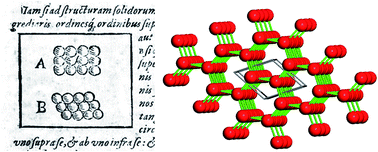
Faraday Discuss., 2018,211, 643-660
https://doi.org/10.1039/C8FD90033G
What is the best or most relevant global minimum for nanoclusters? Predicting, comparing and recycling cluster structures with WASP@N
Our WASP@N project is an open-access database of cluster structures with a web-assisted interface and toolkit for structure prediction.

Faraday Discuss., 2018,211, 593-611
https://doi.org/10.1039/C8FD00060C
Is zeroth order crystal structure prediction (CSP_0) coming to maturity? What should we aim for in an ideal crystal structure prediction code?
Given that many important materials persist, and indeed may be formed, when they are not the most thermodynamically stable structure, we need to define what would be required of an ideal CSP code.
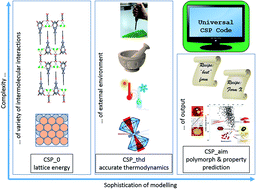
Faraday Discuss., 2018,211, 9-30
https://doi.org/10.1039/C8FD00121A
First-principles stability ranking of molecular crystal polymorphs with the DFT+MBD approach
We discuss the impact of many-body dispersion effects, exact exchange, and vibrational free energies on a crystal structure prediction procedure applicable to pharmaceutically relevant systems. Furthermore, we show that this procedure is generally robust and the used approximations lead on average to changes of relative stabilities of only 1–2 kJ mol−1.
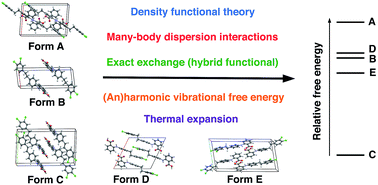
Faraday Discuss., 2018,211, 253-274
https://doi.org/10.1039/C8FD00066B
Repulsion–dispersion parameters for the modelling of organic molecular crystals containing N, O, S and Cl
A method for deriving parameters of atom–atom repulsion dispersion potentials for crystals, tailored to different ab initio models, is presented. It leads to a significant improvement in the accuracy of computed sublimation energies.
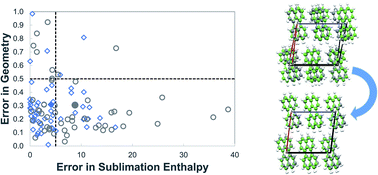
Faraday Discuss., 2018,211, 297-323
https://doi.org/10.1039/C8FD00064F
The Flexible Unit Structure Engine (FUSE) for probe structure-based composition prediction
We present a computational method to generate hypothetical probe structures for screening composition space in the search for new compounds.
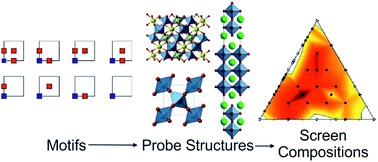
Faraday Discuss., 2018,211, 117-131
https://doi.org/10.1039/C8FD00045J
How many ritonavir cases are there still out there?
The number of dormant ritonavir cases is estimated based on 41 commercial pharmaceutical crystal structure prediction studies.
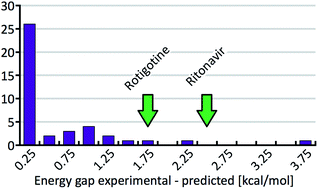
Faraday Discuss., 2018,211, 441-458
https://doi.org/10.1039/C8FD00069G
Adventures in boron chemistry – the prediction of novel ultra-flexible boron oxide frameworks
We predict a wide range of ultra-flexible low-energy forms of boron oxides in which rigid B–O–B bridges link boron–oxygen heterocycles.

Faraday Discuss., 2018,211, 569-591
https://doi.org/10.1039/C8FD00052B
The importance of configurational disorder in crystal structure prediction: the case of loratadine
A crystal structure prediction study of loratadine demonstrates the important role of experimentally observed disorder in determining the relative stability of the known monotropically related polymorphs.
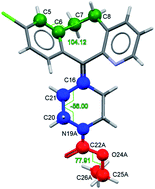
Faraday Discuss., 2018,211, 209-234
https://doi.org/10.1039/C8FD00072G
TopoFF: MOF structure prediction using specifically optimized blueprints
Using topoFF, topological blueprints can be optimized for the structure prediction of MOFs.
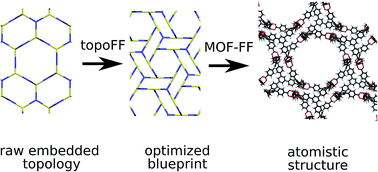
Faraday Discuss., 2018,211, 79-101
https://doi.org/10.1039/C8FD00051D
ROY revisited, again: the eighth solved structure
X-ray powder diffraction and crystal structure prediction algorithms are used in synergy to establish the crystal structure of the eighth polymorph of ROY, form R05.
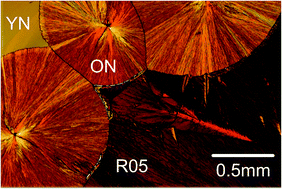
Faraday Discuss., 2018,211, 477-491
https://doi.org/10.1039/C8FD00039E
Computational modelling of solvent effects in a prolific solvatomorphic porous organic cage
A computational approach has been developed to assess the effect of solvent stabilisation on the predicted crystal structures of a porous organic cage.
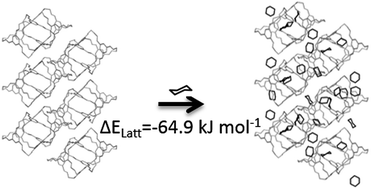
Faraday Discuss., 2018,211, 383-399
https://doi.org/10.1039/C8FD00031J
Predicting the structures and associated phase transition mechanisms in disordered crystals via a combination of experimental and theoretical methods
Experimental terahertz time-domain spectroscopy and theoretical solid-state ab initio density functional theory and molecular dynamics simulations are used to elucidate the structures, dynamics, and phase transformation processes of molecular crystals undergoing a solid-state order–disorder transition.
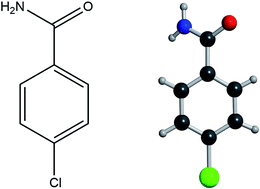
Faraday Discuss., 2018,211, 425-439
https://doi.org/10.1039/C8FD00042E
Zeolite structure determination using genetic algorithms and geometry optimisation
The recently presented software zeoGAsolver is discussed, which is based on genetic algorithms, with domain-dependent crossover and selection operators that maintain the size of the population in successive iterations while improving the average fitness.
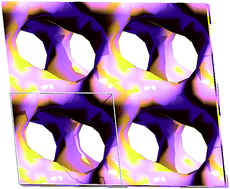
Faraday Discuss., 2018,211, 103-115
https://doi.org/10.1039/C8FD00035B
Data-driven learning and prediction of inorganic crystal structures
Machine learning-based interatomic potentials, fitting energy landscapes “on the fly”, are emerging and promising tools for crystal structure prediction.
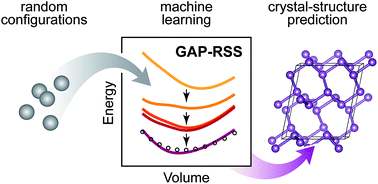
Faraday Discuss., 2018,211, 45-59
https://doi.org/10.1039/C8FD00034D
Accelerating CALYPSO structure prediction by data-driven learning of a potential energy surface
CALYPSO structure prediction is significantly accelerated by on-the-fly learning of a potential energy surface.
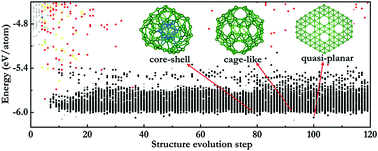
Faraday Discuss., 2018,211, 31-43
https://doi.org/10.1039/C8FD00055G
Metashooting: a novel tool for free energy reconstruction from polymorphic phase transition mechanisms
Metashooting, a novel simulation scheme, combines free energy surface reconstruction and detailed elucidation of transformation mechanisms.
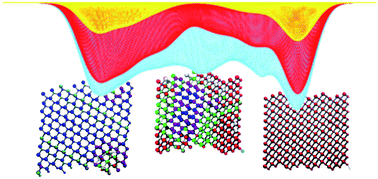
Faraday Discuss., 2018,211, 235-251
https://doi.org/10.1039/C8FD00053K
Evolutionary niching in the GAtor genetic algorithm for molecular crystal structure prediction
The effects of evolutionary niching are investigated for the crystal structure prediction of 1,3-dibromo-2-chloro-5-fluorobenzene.
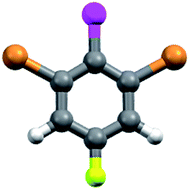
Faraday Discuss., 2018,211, 61-77
https://doi.org/10.1039/C8FD00067K
Crystal structure prediction is changing from basic science to applied technology
Prediction of true polymorphs as dynamic ensembles in contrast to hypothetical static crystal structures.

Faraday Discuss., 2018,211, 459-476
https://doi.org/10.1039/C8FD00033F
Reducing possible combinations of Wyckoff positions for zeolite structure prediction
Restricting the numbers of Wyckoff positions (WPs) on axes and planes dramatically reduces the WP combinations for zeolite structure prediction.
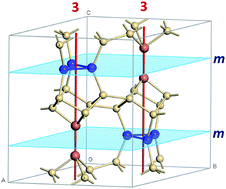
Faraday Discuss., 2018,211, 541-552
https://doi.org/10.1039/C8FD00040A
Towards the systematic crystallisation of molecular ionic cocrystals: insights from computed crystal form landscapes
The underlying molecular and crystal properties affecting the crystallisation of organic molecular ionic cocrystals (ICCs) are investigated.
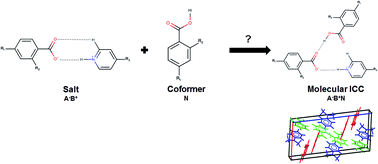
Faraday Discuss., 2018,211, 401-424
https://doi.org/10.1039/C8FD00036K
Identifying pragmatic quasi-harmonic electronic structure approaches for modeling molecular crystal thermal expansion
Hybrid quasi-harmonic electronic structure strategies can predict molecular crystal thermal expansion and thermochemistry in good agreement with experiments at reasonable computational cost.
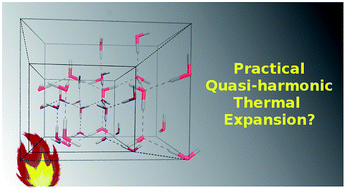
Faraday Discuss., 2018,211, 181-207
https://doi.org/10.1039/C8FD00048D
Materials discovery by chemical analogy: role of oxidation states in structure prediction
We have built a model that ascribes probabilities to the formation of hypothetical compounds, given the proposed oxidation states of the constituent species.
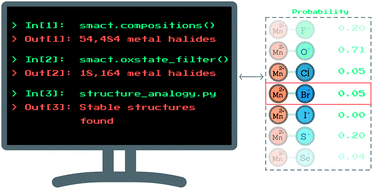
Faraday Discuss., 2018,211, 553-568
https://doi.org/10.1039/C8FD00032H
Crystal structure prediction of flexible pharmaceutical-like molecules: density functional tight-binding as an intermediate optimisation method and for free energy estimation
Periodic DFTB3-D3 calculations allow the refinement of molecular conformations within crystal structures and estimates of phonons for flexible pharmaceutical molecules.
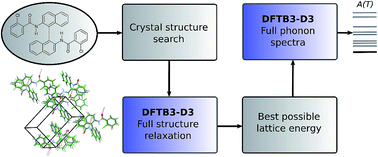
Faraday Discuss., 2018,211, 275-296
https://doi.org/10.1039/C8FD00010G
Structure searching methods: general discussion
Faraday Discuss., 2018,211, 133-180
https://doi.org/10.1039/C8FD90030B
Crystal structure evaluation: calculating relative stabilities and other criteria: general discussion
Faraday Discuss., 2018,211, 325-381
https://doi.org/10.1039/C8FD90031K
Applications of crystal structure prediction – inorganic and network structures: general discussion
Faraday Discuss., 2018,211, 613-642
https://doi.org/10.1039/C8FD90034E
Applications of crystal structure prediction – organic molecular structures: general discussion
Faraday Discuss., 2018,211, 493-539
https://doi.org/10.1039/C8FD90032A
About this collection
We are delighted to share with you a selection of the papers which will be presented at our Faraday Discussion on Methods and applications of crystal structure prediction taking place in Cambridge, UK in July 2018. More information about the event may be found here: http://rsc.li/crystal-fd2018. Additional articles will be added to the collection as they are published. The final versions of all the articles presented and a record of the live discussions will be published after the event.
The prediction of crystal structures from first principles has been one of the grand challenges for computational methods in chemistry and materials science. The goal of being able to reliably predict crystal structures at an atomistic level of detail, given only the chemical composition as input, presents several challenges. A solution to the crystal structure prediction challenge requires advances in several areas of computational chemistry. Theoretical chemists have naturally been drawn to these challenges from an academic perspective, while the development of methods for solving the problem of crystal structure prediction has also been motivated by a growing range of applications where reliable structure prediction is sought and could guide experimentation.
Crystal structure predictions have been used to study organic molecules, such as polymorphism of pharmaceutical molecules, where changes in crystal form can lead to changes in important physical and chemical properties. These must be strictly controlled in a pharmaceutical product, or inorganic materials where the discovery and computational design of new materials with targeted properties, such as porosity, electronic or mechanical properties are necessary. However, the communities addressing methods and applications in organic and inorganic crystal structure prediction have largely remained separate, due to the different approaches that have been used in these two areas. The community as a whole will benefit from cross-fertilisation of ideas and methods.